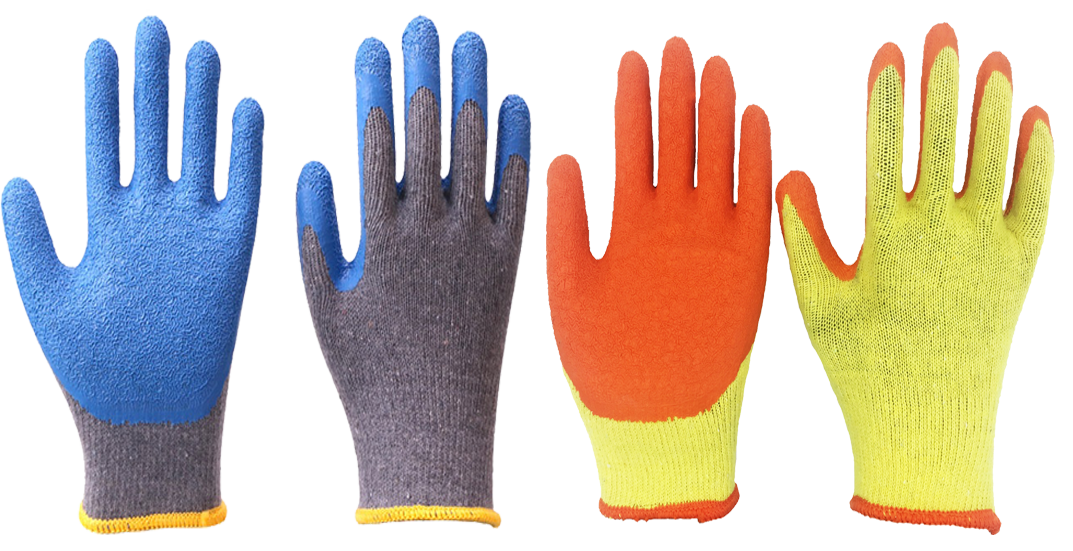What types of labor protection gloves
What are the general labor protection gloves on the market? What types of ordinary labor protection gloves? Which type of protective gloves is more suitable for you? Labor insurance gloves generally have two classification methods, one is according to the material and production technology of the gloves; the other is according to the use of gloves.
It is lined with a glove core of different materials and the surface is coated with a layer of glue. Its glove liner can usually be divided into two types, one is knitted with knitted gloves, the materials are polyester, nylon, polyester-cotton recycled yarn, polyester-cotton, acrylic, HPPE, spandex, glass fiber, KEVLAR, DYNEEMA, Bamboo fiber and so on. The other is that the woven fabric is cut and then sewed by a sewing machine. The general woven fabric is divided into cotton wool and fleece. Cotton wool is usually thinner than the fleece and the surface is not raised. The more common dipped gloves on the market are mainly knitted glove cores.
The surface coating of dipped gloves is usually made of natural rubber or synthetic latex. Synthetic latex is commonly used for nitrile, PVC, PU, etc. Dipped gloves have now become the mainstream labor protection gloves on the market, and are now the largest sales gloves on the market.

Beaded gloves
Generally, the beaded gloves are coated with a layer of glue on the surface of the palm of the knitted glove core with a beading machine. The material of the glove core is various. Common ones are polyester, polyester-cotton recycled yarn and so on. There are many types of glue dots, and different manufacturers will have some differences. There are also beaded gloves that are beaded on a woven fabric, then cut and sewn. This is relatively rare. It has a certain market, because its dust-proof effect is better. Overall, the advantages of beaded gloves are non-slip and breathable, but they are mainly used in some relatively clean working environments.
Knitted gloves
It is weaved by a glove machine and then hemmed the cuffs by a hemming machine. It can be divided into fifteen stitches, thirteen stitches, ten stitches and seven stitches according to the density of gloves. Fifteen stitches and thirteen stitches are some of the thinner gloves, of which thirteen stitch polyester is more common. Ten stitches are mainly some medium thickness gloves. Seven stitches are the thickest gloves among them. Knitted gloves on the market generally use specifications per gram of weight and material to divide the specifications. Generally, the gram weight they refer to is not the actual gram weight, which is generally dozens of grams lower than the actual.
In addition to polyester, the material of knitted gloves in the domestic market is basically recycled yarn. The purchase of such gloves should consider the problem of defective products. According to our observation, the defective rate of recycled yarn gloves on the market is very high.
Leather gloves
Leather gloves used to be the mainstream variety in the general labor protection gloves market, but they were gradually replaced by dipped gloves. The reason for replacement involves price and dexterity. But because of the advantages of leather gloves in puncture resistance, cut resistance, heat insulation, etc., although it lacks dexterity, it has been selling well in the market, especially for welding.
However, because leather gloves are cut from other leather products and then manually sewed with a sewing machine, the quality is often unstable and the color is not uniform. Customers report that the most common problem is that they are easy to open. The leather was still intact and the gloves had been opened, making it unusable. Other problems include odors from gloves, leather that is too hard, scum inside to stain your hands, and the same piece of skin varies in thickness.
Canvas gloves
Canvas gloves are cut and sewn from canvas, and generally have inner linings. Its characteristics are mainly dustproof and breathable. Compared with knitted gloves, it has many advantages: it can prevent dust from entering the gloves through the gaps of the gloves during the wearing process to soil your hands; it can provide more protection than knitted gloves; it is not easy to fluff; Easy to wait.
Like knitted gloves, the canvas used in canvas gloves is mostly woven from recycled cotton yarn. If you take a closer look at the gloves, you will find that there is a lot of impurities in the canvas, unlike the canvas we see on other high-end products, it is not pure white. The color and material of the lining used in canvas gloves are not absolutely uniform, because it comes from a variety of sources and is not a uniform fabric made by the manufacturer. The production of canvas gloves mostly stays on the scale of home workshops.


